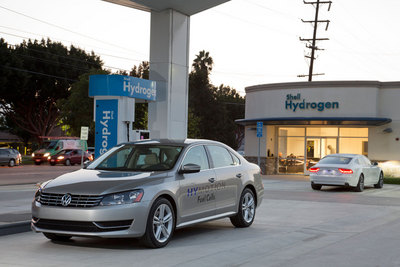HH Reports: Volkswagen Group Shows Its Fuel Cell Technology Future +VIDEO
SEE ALSO: The Auto Channel Hydrogen Fuel Cell News Library; 6598 Citations (1997-2015)
SEE ALSO: How Fuel Cells Work
By Henny Hemmes
Senior European Editor
The Auto Channel
Auto Central Europe December 30, 2014; In the past few years, we did not hear much about fuel cell vehicles (FCV), but Research and Development engineers world wide have not been resting on their laurels. They are working continuously to optimize the technology for production in the not too far future.
In this respect, the Volkswagen Group showed its state of affairs at the LA Auto Show with the world premieres of the Golf Sportwagen HyMotion and the Audi A7 h-tron quattro Concept.
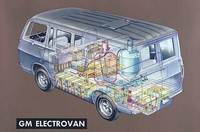 |
In the nineties, Volkswagen started researching the potential of the fuel cell and its application in production cars. In 2001, the group commenced construction of Technology Center for Electric Traction, near its headquarters in Wolfsburg. The infrastructure there includes a hydrogen station. Volkswagen produces hydrogen from renewable solar energy.
In the meantime, GM and Mercedes started test programs in the US, while BMW and Toyota who had been researching the technology for more than a decade announced in 2013 to jointly develop a hydrogen fuel cell system for vehicles by 2020. Earlier this year, Hyundai claimed the first delivery of a mass-produced fuel cell model, the Tuscon FC, but is the amount of one thousand units that the South Korean company plans to deliver in 2015, a mass production?
Recently, the general public has become more award of the fact that quite some car manufacturers are researching fuel cell technology. Last November, at the 2014 Los Angeles Auto Show, Toyota announced to start production of the Mirai fuel-cell car in 2015. Like the Prius hybrid, we may expect a lot of promotion and broad attention upon the market introduction of the Mirai (Japanese for ‘future’). And it looks like Southern California will be the place where the future starts, provided the availability of filling stations will keep pace with the technological developments.
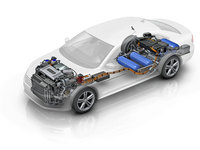 |
At the LA SHOW Audi also unveiled the A7 Sportback h-tron quattro Concept, a plug-in hybrid fuel cell version with two electric motors to drive to all four wheels. It was a pity that it was somewhat lost in the crowd that gazed at the nearby Prologue Concept Launch that gae us a sneak peak at the upcoming Audi design cues.
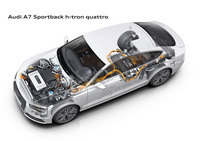 |
The Volkswagen FCVs have a 100 kW electric motor with 270 Nm/199 lb-ft of torque, that is also used in the e-Golf. The 1.1 kWh and 36 kW lithium-ion battery pack in the HyMotion models comes from the Jetta Hybrid. However, the A7 Sportback h-tron has two electric motors for quattro-performance: one drives the front wheels, the other one drives the rear wheels. The power output is the same as in both Volkswagen HyMotion models.
According to Prof. Dr. Ulrich Hackenberg, Audi’s Board Member for Technical Development, the engineers are well on their way with the development of the fifth generation fuel cell. We will probably hear more about this towards the end of 2015. Unlike its Japanese competitors, the Volkswagen Group has chosen to develop alternative power trains for existing and new models, which are built on the MQB (Modular Quer Baukasten, or east-west) architecture of VW and the MLB (longitudional) from Audi. Because the FCVs can be built alongside conventional models, this strategy significantly will lower production costs. The FCV vehicles resemble their production counterparts, which could also generate easier and faster public acceptance of the new technology.
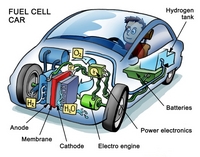 |
In the evening, I spoke with Immanuel Kutschero, responsible for pre-development at Audi and holder of several patents. He said that fuel cell technology is still very expensive because of the use of platinum. Today, the system needs 52 grams, but he expects to be able to reduce this amount by 50 per cent.
Mr. Kutschero: ”By reducing the amount of platinum, we have to find a way to maintain the catalytic activity. The unit itself will not get any smaller, as the surface has to be large to secure activity.”
A year ago, VW announced plans to offer electric cars in each segment by 2018 and to invest until than 85 billion euro (more than 100 billion dollars) in new models and innovative technology. This objective was confirmed by the Group’s Chairman of the Board Prof. Dr. Martin Winterkorn. "We have the expertise and financial capabilities to expand our leadership position in technology and to achieve our goals for 2018".
Please stay tuned to The Auto Channel for our first drives with prototypes of the Audi A7 h-tron quattro and the Passat HyMotion



